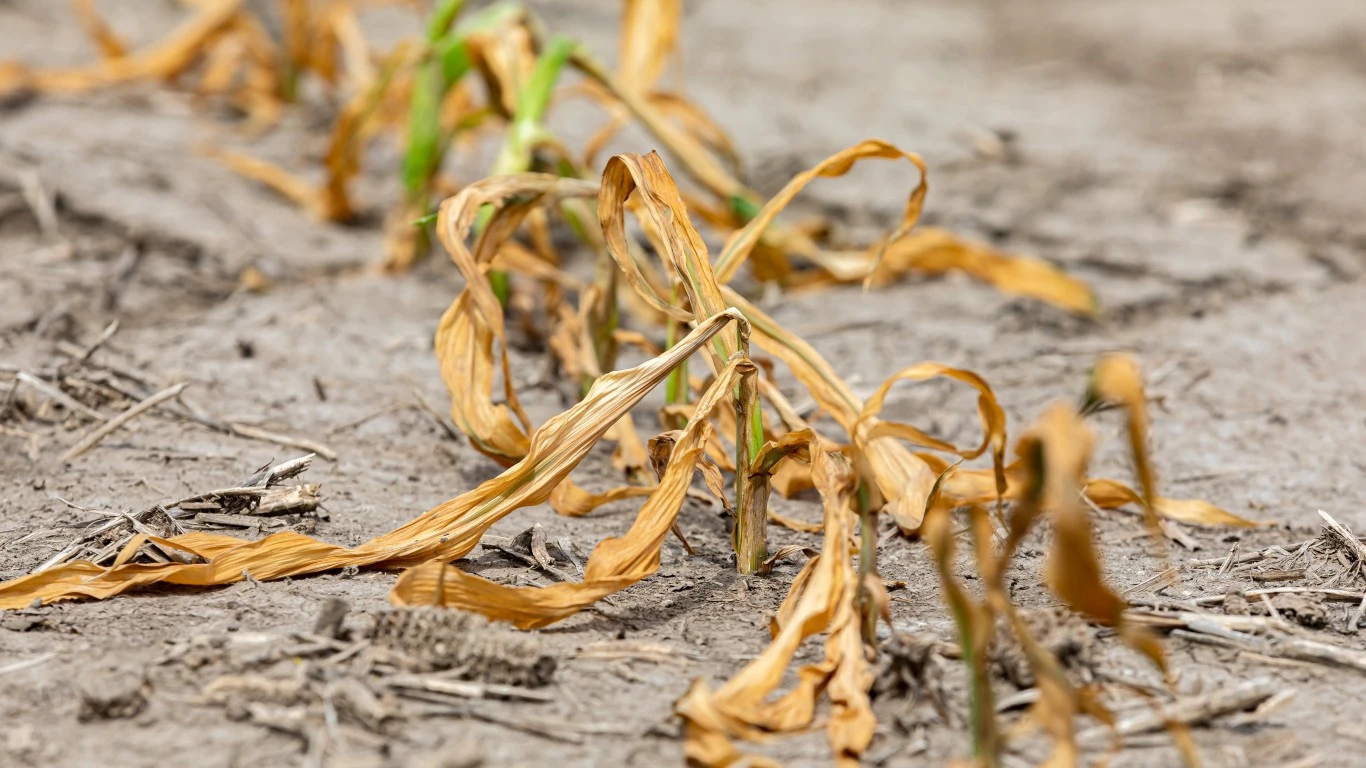
Since 1980, there have been 332 weather disasters in the U.S. that have inflicted at least $1 billion worth in damage. And these events have been getting more frequent over the decades. According to the U.S. Geological Survey, with increasing global surface temperatures the possibility of more droughts and increased intensity of storms are likely to occur. Similarly, floods, freezes, and wildfires could increase in frequency and intensity.
There were 31 storms with losses of at least $1 billion in the 1980s. There were 55 such storms in the 1990s; 67 in the 2000s; 128 in the 2010s; and 51 since 2020. (Here are the worst cities to live as climate change gets worse.)
Considering the significant economic damage these climate disasters inflicted, many have inflicted relatively few fatalities: 308 left fewer than 100 people dead, including 190 that killed fewer than 10 people . But some of these disasters were far deadlier, including the drought and heatwave that baked the central-eastern part of the country in the summer of 1980 and cost 1,260 lives. The disaster also inflicted nearly $38 billion in inflation-adjusted dollars.
To identify the deadliest billion-dollar storms, 24/7 Wall St. reviewed the National Oceanic and Atmospheric Administration’s Billion-Dollar Weather and Climate Disasters database that tracks weather and climate disasters since 1980. The 24 disasters that caused 100 deaths or more were ranked by the number of fatalities. We included the total inflation-adjusted damage, cleanup, and repairs costs.
In total these two dozen weather events killed 10,940 people and cost $712 billion. Five hurricanes were responsible for about 5,200 deaths, nearly half of the deaths. These hurricanes also caused nearly $443 billion in damage, cleanup, and repair costs, representing 62% of the total financial impact of these storms.
Hurricanes Katrina (2005) and Maria (2017) were by far the deadliest and most costly U.S. weather-related tragedies on record. Tropical cyclones tend to make landfall in the south or southeast, so these regions tend to have the highest frequency and highest cost of climate disasters. (These are countries where the most people have died in natural disasters.)
Out of the weather events on the list, droughts and wildfires were responsible for 36% of the deaths these disasters caused, followed by winter storms and cold waves at 10%. Severe storms, like tornado outbreaks, hailstorms, and heavy winds and downpours, are the least costly and fatal, responsible for 6% of the deaths and 4% of the costs.
Here are the deadliest billion-dollar natural disasters in US history.





